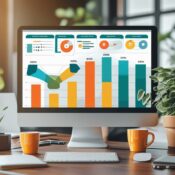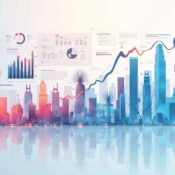Data Science Predictive Analytics: By Rapid Phone Center

Data Science Predictive Analytics: By Rapid Phone Center
Predictive analytics in data science uses big data to forecast trends, optimize decisions, and reveal insights, driving innovation and efficiency.
In today’s fast-paced business environment, companies rely heavily on data-driven insights to stay ahead of the competition. At Rapid Phone Center, we harness the power of data science and predictive analytics to optimize our services, streamline operations, and provide top-tier customer experiences. In this guide, we will explore the intricate relationship between predictive analytics and data science, and how these cutting-edge technologies help us stay on top in a highly competitive market.

What is Predictive Analytics in Data Science?
Predictive analytics is a subset of data science that focuses on forecasting future trends based on historical data. By employing various statistical techniques, machine learning algorithms, and big data analytics, businesses can predict outcomes with a high degree of accuracy. At Rapid Phone Center, predictive analytics enables us to identify customer preferences, optimize inventory, and forecast market demand. Discover how our Predictive Analytics Company transforms data into actionable insights, driving smarter decisions and boosting business success.
Key components of predictive analytics include:
- Data collection and preparation: Gathering data from multiple sources and cleaning it for analysis.
- Modeling: Applying machine learning models to recognize patterns and trends in historical data.
- Prediction: Using these models to make informed forecasts about future events, such as customer behavior or equipment maintenance needs.
Data Science Predictive Analytics: A Comprehensive Guide to Forecasting and Decision Making
While predictive analytics focuses on forecasting outcomes, data science encompasses a broader range of data-related activities. It involves collecting, processing, and analyzing data to generate actionable insights. At Rapid Phone Center, we leverage data science not only for prediction but also for enhancing decision-making, improving operational efficiency, and developing new business strategies. Unlock the power of AI Predictive Analytics to enhance decision-making, optimize operations, and drive business growth with data-driven insights.

Data science includes various disciplines such as:
- Data engineering: Building the infrastructure to store and manage large datasets.
- Data analysis: Interpreting data to understand business performance and customer preferences.
- Machine learning: Training algorithms to automatically improve their predictions over time.
In essence, predictive analytics and data science work together to provide a complete data-driven approach to decision-making.
Predictive Analysis Data Science: Unlocking Insights for Future Trends and Decision Making
It’s easy to confuse predictive analytics with data science, but there are some key differences between the two:
- Predictive analytics is primarily concerned with forecasting future events based on historical data, while data science involves a broader range of activities, including data collection, analysis, and interpretation. Unlock insights with our Statistical Data Analysis services at Rapid Phone Center, transforming data into strategies for success!
- Data science includes various types of data analysis, such as descriptive and prescriptive analytics, while analytics is specifically focused on using data to predict future outcomes.
At Rapid Phone Center, we have fully integrated analytics and data science into our operations to provide a more efficient, customer-focused service. Here are some of the ways these technologies enhance our business:

- Customer Service Optimization: By analyzing past interactions, we can predict potential customer issues and proactively address them, leading to higher customer satisfaction.
- Inventory Management: Using predictive analytics in data science, we forecast demand for different products, ensuring optimal stock levels and reducing waste.
- Marketing and Sales Forecasting: Predicting customer preferences and behavior helps us tailor marketing strategies and improve sales outcomes.
At Rapid Phone Center, we utilize data science for a wide range of tasks, including data collection and processing, while our predictive analytics capabilities allow us to anticipate market trends and customer needs. Harness the potential of Predictive Marketing Analytics to forecast trends, optimize campaigns, and enhance customer engagement for better results.
Predictive Analytics Data Science: Harnessing Data for Accurate Forecasting and Strategic Insights
Predictive analysis is an essential tool in the data science toolkit that helps businesses make informed decisions. By identifying trends, correlations, and potential risks, companies can adjust their strategies in real-time. At Rapid Phone Center, analysis allows us to optimize pricing, improve resource allocation, and reduce operational costs.
This process involves several steps:
- Data Collection: Gathering relevant historical data from various sources.
- Data Preparation: Cleaning and structuring the data to remove inconsistencies.
- Modeling: Using machine learning algorithms to identify patterns in the data.
- Evaluation: Assessing the accuracy of the model and refining it to improve predictions.
By utilizing data science predictive analysis, we can make more accurate business decisions, ultimately leading to better customer service and higher profitability.

Difference Between Predictive Analytics and Data Science
The advent of big data has transformed the way companies like Rapid Phone Center use data science and analytics. By processing and analyzing massive amounts of data, we can uncover patterns that were previously impossible to detect. Streamline your operations with our Back Office Services, providing efficient support in administration, finance, and HR for business growth.
Big data provides us with a wealth of information, such as:
- Customer preferences and behavior: Allowing us to tailor our services to meet individual needs.
- Market trends: Helping us stay ahead of the competition by predicting shifts in demand.
- Operational efficiency: Identifying areas where resources can be used more effectively.
With data science predictive analytics and big data, we can deliver more personalized experiences to our customers while optimizing our internal processes.
Predictive Analytics vs Data Science: Which One is Right for Your Business?
Both predictive analytics and data science play crucial roles in modern business operations, but their use depends on the specific goals of the organization. If you are looking to forecast future trends, analytics will be the right approach. On the other hand, if you want to generate comprehensive insights from data and improve decision-making processes, a broaderdata science strategy may be more appropriate.
At Rapid Phone Center, we believe in a holistic approach, combining both data science and analytics to optimize every aspect of our business. Transform your support with AI Customer Service, delivering instant responses, personalized interactions, and enhanced customer satisfaction.

What is Predictive Analysis in Data Science?
Predictive analysis is one of the most powerful tools in data science, offering insights into future outcomes by leveraging historical data. At Rapid Phone Center, we use analysis in data science to forecast market trends, understand customer needs, and streamline our operations. This approach allows us to stay agile and responsive in a rapidly changing market.
At Rapid Phone Center, our commitment to utilizing the latest advancements in data science and analytics allows us to offer exceptional services to our customers. Whether you’re looking to improve operational efficiency, enhance customer satisfaction, or stay ahead of market trends, our integrated approach to analytics and data science provides the insights needed to drive success.
By leveraging these cutting-edge technologies, we continue to lead the way in providing innovative solutions for both our business and our customers. Optimize your business with Ecommerce Fulfillment solutions, ensuring fast shipping, accurate order processing, and satisfied customers every time.
Frequently Asked Questions
Rapid Phone Center offers a comprehensive FAQ section covering data science and predictive analytics, helping you quickly find expert insights.
What is Analytics?
Analytics is a branch of data science that uses historical data, machine learning models, and statistical algorithms to predict future outcomes or trends. It helps organizations anticipate events, behaviors, or needs by analyzing patterns and making data-driven forecasts.

What kind of data is needed for Analytics?
To perform analytics, you need historical data related to the outcome you’re trying to predict. This data could come from various sources such as customer transactions, social media, sensor readings, or operational data. The quality and quantity of this data will directly impact the accuracy of predictions.
What is the role of machine learning in Analytics?
Machine learning plays a critical role in analytics by enabling models to learn from data and improve predictions over time. Algorithms such as decision trees, random forests, support vector machines (SVM), and neural networks are commonly used to develop predictive models.
How accurate are Analytics models?
The accuracy of models depends on the quality of the data, the appropriateness of the algorithms used, and the relevance of the features included. Regularly tuning the models and updating them with new data can improve accuracy.
You might also find our article appealing:
Thanks, and Good Luck to You 🌊




